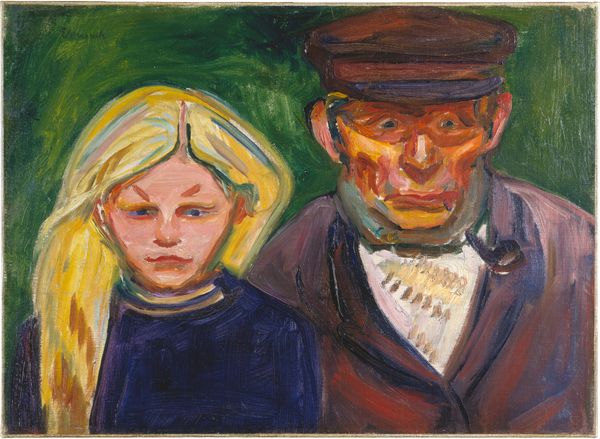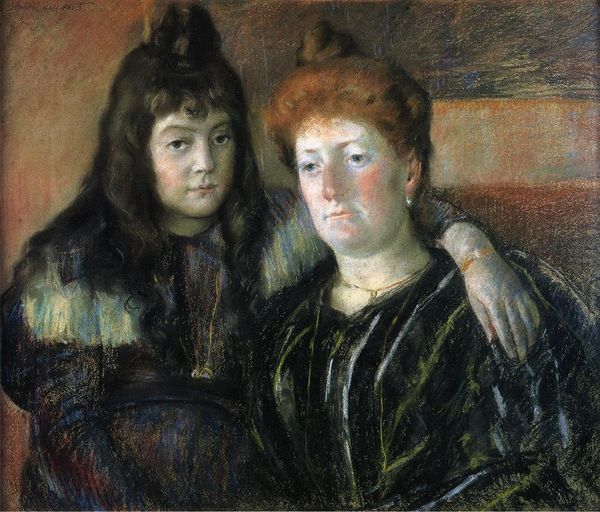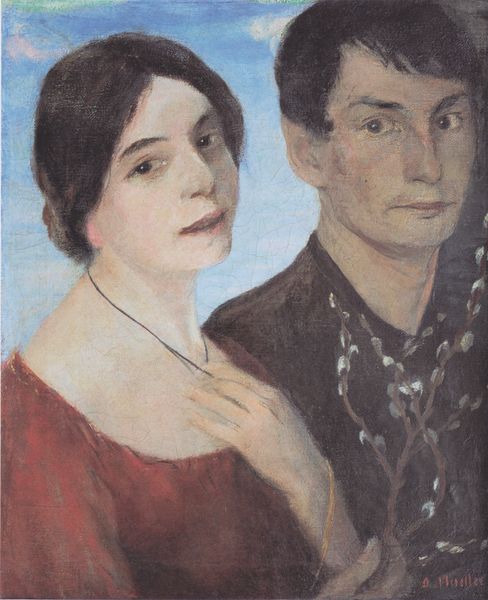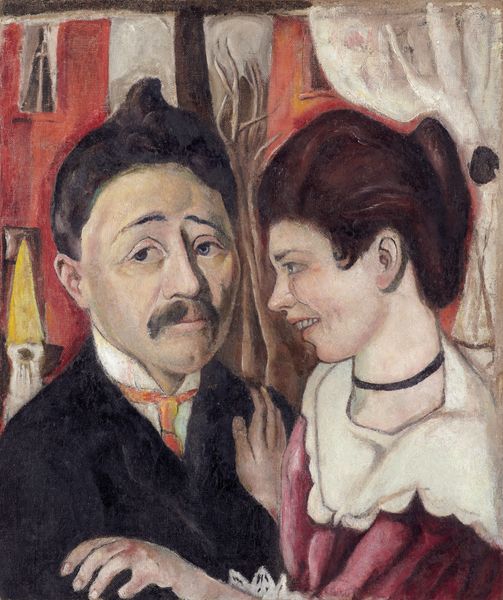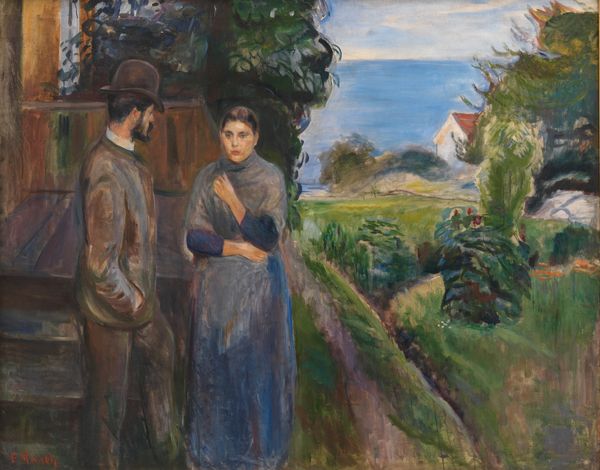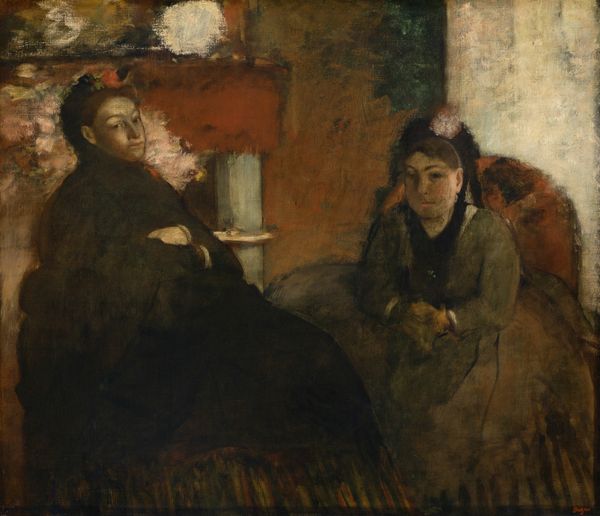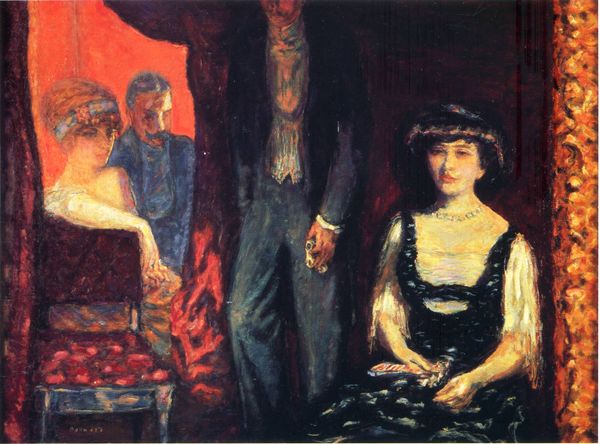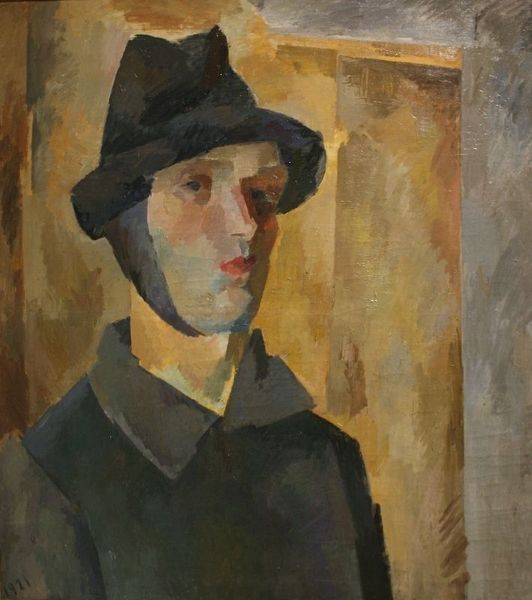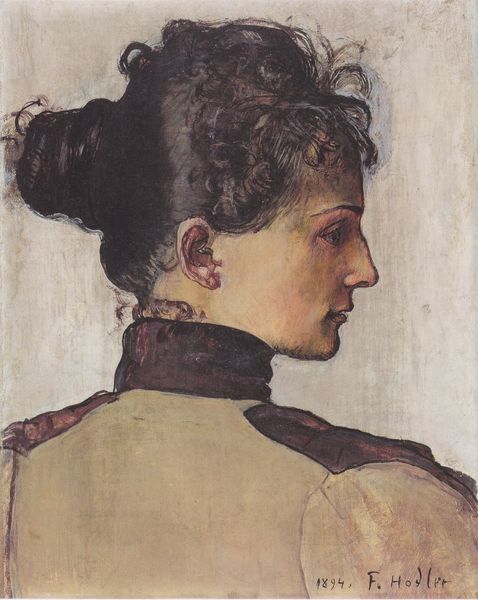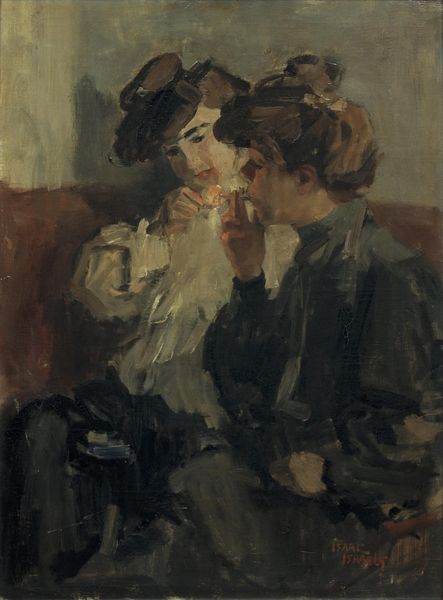
Copyright: Public Domain: Artvee
Edvard Munch painted Aase and Harald Nørregaard in 1899 using oil on canvas, a familiar combination, yet his application of the paint is striking. Look closely, and you’ll notice the textured surface, created by layering the oil in broad, expressive strokes. This isn’t the smooth, blended finish you might expect from a traditional portrait. Munch’s technique emphasizes the materiality of paint itself, drawing attention to the physical act of its application. It’s fascinating to consider the labor involved in producing these paintings. From preparing the canvas to grinding pigments, Munch engaged in a deeply physical process. The tools and methods used in painting, like the brushstrokes visible here, are infused with social significance, telling stories of artistic training, workshop traditions, and the broader context of art production. By focusing on these aspects, we move beyond the mere representation of Aase and Harald Nørregaard, to understand the painting as a cultural object embedded with layers of meaning.
Comments
No comments
Be the first to comment and join the conversation on the ultimate creative platform.

